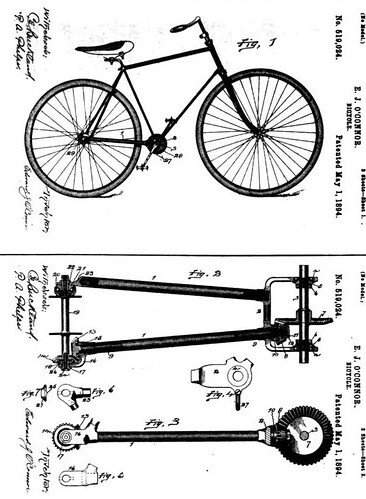Source: gallica.bnf.fr via GallicaBnF on Pinterest
Did chains break all that often?
The BnF has posters not just from France but from other European countries on their Pinterest "Velo Board." It appears that the above chainless bicycle was made in Denmark by Nordisk Cyclefabrik - ah the things you can discover with Google. Small print on the poster indicates that while the bicycle was made in Denmark and the poster was likely intended for use in Denmark (since it advertises a Danish location for purchasing the bicycle) the printing was done in Paris - so presumably this is how it got into the BnF, through some sort of copyright-like deposit.
Someone in Denmark created a blog post (in English) describing this Danish chainless bike if one wants to know more.
This poster, as with the other, emphasizes the reliability of a shaft-drive bike over a bike with a chain - that chains break and you can avoid that with a shaft drive. It may have been that manufacturing practices at the time produced chains that were less reliable than today - other than bikes from box stores, I think most chains are pretty reliable nowadays (unless abused). Modern attempts to market chainless bikes have focused more on their being cleaner and easier to maintain, particularly for belt-drive systems combined with an internal hub gear system.
The one somewhat fanciful aspect to this poster is the effortless way the rider is proceeding up what looks to be a reasonably steep hill - this shaft-drive bike is still a single speed bicycle and riding up a hill while seated would generally require a fair application of effort. (While I have seen many photos and images of both men and women in the 1890s bent over their bicycles to ride quickly in so-called "scorcher" position, I have never seen a photo where the rider has stood out of the saddle to ride up a hill.)







